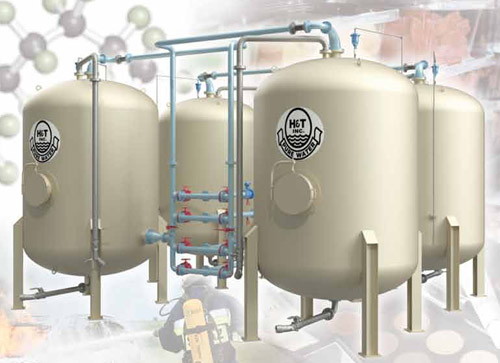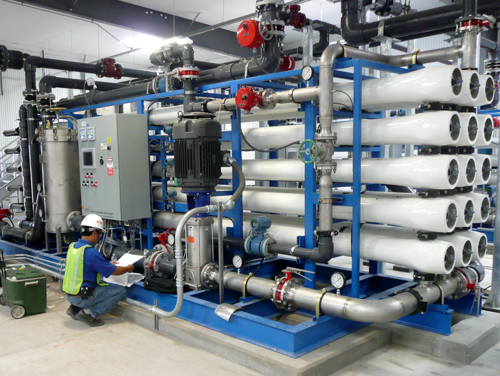Your Overview to PFAS Treatment Technologies and Advantages
The prevalence of PFAS contamination in water resources requires a complete understanding of offered treatment modern technologies. Different methods, such as turned on carbon filtering, ion exchange systems, and advanced oxidation procedures, existing unique advantages in dealing with these consistent toxins. Each technology not just targets specific PFAS substances yet also plays an important function in boosting general water high quality and safeguarding environmental honesty. As communities come to grips with the implications of PFAS direct exposure, the option of a suitable therapy strategy ends up being significantly important, triggering a closer assessment of these modern technologies and their particular benefits.
Understanding PFAS Contamination
Comprehending PFAS contamination is essential for resolving its prevalent impact on ecological and human health and wellness (m270 pfas treatment). Per- and polyfluoroalkyl substances (PFAS) are a team of artificial chemicals widely used in various commercial and consumer products because of their water- and grease-resistant properties. Typically located in firefighting foams, non-stick kitchenware, and water-repellent textiles, PFAS have entered the atmosphere with production procedures, wastewater discharges, and leaching from landfills
When released, these materials continue the environment, resulting in prevalent contamination of dirt and water resources. Their special chemical structure, characterized by strong carbon-fluorine bonds, provides them resistant to deterioration, leading to a sensation known as "for life chemicals." As a result, PFAS can collect in the body and the food cycle, potentially causing damaging wellness results, consisting of body immune system disturbance, developing concerns, and an enhanced threat of particular cancers.
Governing companies and health companies are progressively acknowledging the importance of PFAS contamination, prompting efforts to keep an eye on, examine, and alleviate its effects. Understanding the pathways of PFAS contamination is important for notifying public law and creating efficient methods to protect both environmental and human wellness.
Introduction of Treatment Technologies
Different therapy modern technologies have actually been developed to attend to the obstacles positioned by PFAS contamination in water and dirt. These technologies can be generally classified into several groups, each with its special mechanisms and effectiveness in removing PFAS substances.
One noticeable method is ion exchange, which uses resin materials to record and eliminate PFAS from infected water. This method is especially reliable for short-chain PFAS and can achieve considerable decreases in focus levels. One more technology, progressed oxidation processes (AOPs), utilizes strong oxidants and ultraviolet light to damage down PFAS right into much less dangerous substances. AOPs are appropriate for treating a large range of PFAS substances but may require careful optimization to make the most of effectiveness.

Triggered Carbon Filtering
Triggered carbon purification is an extensively used method for the removal of PFAS from contaminated water, known for its ability to adsorb a broad series of organic compounds. This innovation employs activated carbon, a very permeable material with an extensive surface, which promotes the binding of PFAS molecules through physical adsorption. The effectiveness of activated carbon in removing PFAS is affected by numerous aspects, including the type of carbon used, the call time, and the focus of PFAS in the water.
Among the advantages of activated carbon filtration is its adaptability; it can be carried out in numerous arrangements, such as granular triggered carbon (GAC) systems or powdered activated carbon (POLITICAL ACTION COMMITTEE) systems. GAC systems are commonly used in larger-scale applications, while political action committee can be used in smaller sized or momentary configurations. The modern technology is fairly very easy to run and maintain, making it accessible for lots of water therapy centers.

Ion Exchange Systems
Ion exchange systems stand for one more effective method for the elimination of PFAS browse around this site from polluted water, complementing techniques like activated carbon purification. These systems run on the principle of trading ions in the water with ions hung on a resin product. Ion exchange resins can be especially formulated to target the adversely billed PFAS compounds, effectively catching them and enabling cleaner water to travel through.
One of the key advantages of ion exchange systems is their capability to remove a vast array of PFAS, consisting of both long-chain and short-chain versions. This flexibility makes them ideal for various applications, varying from metropolitan water treatment to commercial procedures. In addition, ion exchange systems can commonly achieve reduced discovery limits for PFAS contrasted to some various other therapy methods, therefore boosting water quality.
Nevertheless, it is necessary to keep an eye on and handle the regeneration of ion exchange media, as the performance can decline with time due to saturation. Proper maintenance and replacement of the material are essential for maintaining the system's performance. Overall, ion exchange systems offer a reliable and effective solution for PFAS elimination, adding considerably to safe drinking water requirements and ecological security.
Advanced Oxidation Processes
Advanced Oxidation Processes (AOPs) utilize effective oxidants to properly weaken PFAS substances in contaminated water. These innovative treatment methods generate very reactive varieties, such as hydroxyl radicals, that can break down intricate PFAS particles into i thought about this less unsafe results. m270 pfas treatment. AOPs typically employ mixes of ultraviolet (UV) light, ozone, hydrogen peroxide, or Fenton's reagent, boosting the oxidation capacity and enhancing destruction effectiveness
The main advantage of AOPs lies in their ability to target a broad series of PFAS substances, consisting of both long-chain and short-chain variations. This adaptability is crucial, as PFAS contamination usually entails mixtures of various compounds with varying chemical frameworks. In addition, AOPs can be incorporated right into existing water therapy systems, making them a functional solution for numerous municipalities and sectors.
Nonetheless, the application of AOPs can be resource-intensive, requiring cautious consideration of functional costs and power usage. Additionally, while AOPs work in breaking down PFAS, they may not completely remove all byproducts, demanding additional therapy steps - m270 pfas treatment. On the whole, AOPs stand for an encouraging avenue for dealing with PFAS contamination, adding to cleaner water resources and boosted public health and wellness defense

Conclusion
In conclusion, resolving PFAS contamination calls for an extensive understanding of offered treatment technologies. Activated carbon purification, ion exchange systems, and advanced oxidation processes each existing distinct advantages for efficiently getting rid of these unsafe compounds go to my blog from water sources. By picking the suitable modern technology, neighborhoods can improve water high quality, secure public wellness, and alleviate the ecological threats related to PFAS exposure. Proceeded research study and implementation of these approaches are essential for reliable management of PFAS contamination in influenced areas.